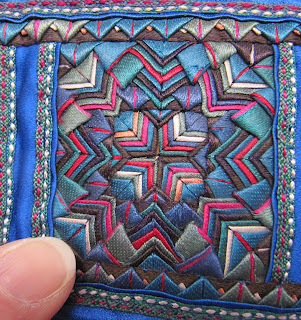By Cindy DeLong
UNL Graduate Student
 |
| Marin and Amanda meeting at the Coffee House. |
Yesterday we had nothing on the schedule, which was good because it was raining. Later in the day Dr. Crews and Marin were giving lectures at the American Exchange Center at Xi'an Jiaotong University, so they had preparation time this morning. We really couldn't go anywhere because the traffic in Xi'an is so bad that if we did, we might not get back in time.
Traffic. It's something else here. I have seen lots of traffic, but never anything like this, except, of course, in Beijing a week ago. And I have never heard so much honking. At first I thought the cars were honking at each other to express anger or say "get out of my way." That's not the case. They honk to warn other cars that they are there and to watch out for them. Here they also have street cars, buses and lots of people on motorcycles, scooters, bicycles and any other type of vehicle you can imagine.
There must be some order to how people drive in this city, but heck if I can tell what it is. It is legal, and normal, to turn left from the far right hand lane. Go figure. Cars cut in front of each other constantly. The drivers have some sort of built-in instinct or antennae so they know EXACTLY how close they can get to another car without hitting it.
These Xi'an streets are the most chaotic I have ever seen. For example, the side street next to our hotel has parking on both sides of the street. But people double-park all day long. The other day, there were almost as many cars double parked as those parked along the curb! In addition to the vehicles and bicycles driving, changing lanes, and turning every-which-way, there are lots of pedestrians crossing the street. Venturing outside anywhere near the street is truly taking your life in your own hands. The odd thing is that we haven't seen any accidents. Very strange.
Since we had some free time this morning, Marin, Amanda and I decided to go to a local coffee house for a cup of brew. It was very good. (The coffee at the hotel is reeeally bad.) We were able to wind down a little and "regroup." We reviewed some of our pictures, which of course sparked conversation and recapping of some of our adventures. We are all charmed by the Chinese children. They are adorable.
 |
| It's a good thing menus have pictures. |
There are a few more things about our dining adventures I have to share. First, napkins are optional. Sometimes you simply don't get one and if you do it's more like a cocktail napkin than anything else. I haven't seen a single dinner napkin since we've been here. Instead of ice water, the restaurants serve hot water in a glass they've taken from a thermos. I think it's been boiled so it's safe to drink. I am actually enjoying this new drink and will probably continue with it when I get home.
Something else a little different is the way they serve the food. In the U.S., restaurants serve the entire order at once. Not here. Food is served as it is prepared in the kitchen. So I might have my food before everyone else. I guess I'm expected to eat it when it arrives, but since food is family-style, everyone just digs in. I'm puzzled. It's a little different.
The other night we went to a place up the street to have noodles. We saw a woman picking up a carry-out order. Yes, it was in a Chinese box just like at home. Well at least something's the same.
Dumplings and Steamed Buns...ummumm GOOD!
 |
| Steamed Buns and Plum Juice. |
A very common dish here is a dough that is stuffed with different things -- vegetables, spinach and egg, shrimp, beef, etc. The dumpling is then steamed until it's done. A steamed bun is the same thing except it's pinched at the top instead of folded. These are delicious, just yummy. Yesterday for lunch we had nothing but a variety of different kinds of steamed buns, and a couple of vegetables dishes. It was a great lunch and we had all we could eat. For seven people the bill was 164 RMB -- about $4 each.
That reminds me, we drink bottled water of course. We can buy it is a quick shop for 2 RMB which is about 35 cents. At the grocery store, water is 1 RMB.
Today, we're taking the bus to the Muslim Quarter. Wish us luck!
Cindy DeLong is working on a master's degree in textile history with
an emphasis in quilt studies at UNL. She has a bachelor of sciences in
home economics (clothing and textiles) and journalism from the
University of Missouri. She has worked at the New England Quilt Museum
as a curatorial intern and the International Quilt Study Center &
Museum as a collections intern.















































.jpeg)





